Tag Archives | SMEs
Governance and public sector management, Health, Industry and trade
 Economics, Health, Industry and trade
Economics, Health, Industry and trade
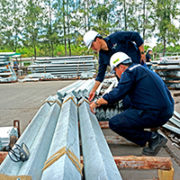 Economics, Governance and public sector management, Industry and trade, Private sector development
Economics, Governance and public sector management, Industry and trade, Private sector development
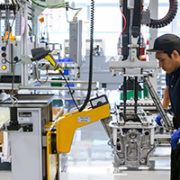 Industry and trade, Information and Communications Technology, Private sector development
Industry and trade, Information and Communications Technology, Private sector development
 Economics, Finance sector development, Information and Communications Technology
Economics, Finance sector development, Information and Communications Technology
 Economics, Finance sector development, Industry and trade
Economics, Finance sector development, Industry and trade
 Economics, Industry and trade, Regional cooperation and integration
Economics, Industry and trade, Regional cooperation and integration
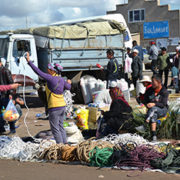 Economics
Economics
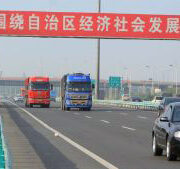 Industry and trade, Regional cooperation and integration
Industry and trade, Regional cooperation and integration
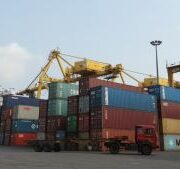 Industry and trade
Industry and trade

Rethinking the impact of the lockdown on micro, small, and medium-sized enterprises in the Philippines

The National Capital Region (NCR) and four provinces in the Philippines have returned to enhanced community quarantine (ECQ) since 29 March 2021 due to surging cases of the coronavirus disease (COVID-19). The ECQ is the strictest measure for prohibiting the movement of people for nonessential purposes and strengthening curfews. The Philippine government moved to the ECQ, or lockdown, to contain the spread of COVID-19 quickly after the pandemic was identified in March 2020.
Empowering Thai SMEs to join global value chains: Policy priorities under COVID-19

Small and medium-sized enterprises (SMEs) are significant contributors to economic activity and employment worldwide, and Thailand is no exception. In Thailand, SMEs represent the vast majority of firms and employ the bulk of the domestic workforce. According to the Office of SMEs Promotion (OSMEP 2019), in 2018, approximately 3 million companies were classed as SMEs in the country, comprising 99.8% of all companies. SMEs also accounted for 14 million jobs, or 86% of total employment.
SMEs in global value chains: Catalysts for dynamic and inclusive economic growth

The world has been witnessing the active construction of global value chains (GVCs) by multinational corporations (MNCs) in recent decades. According to the World Bank (2020), the share of GVC trade in world trade increased rapidly from approximately 40% in 1990 to over 50% in 2007 before declining somewhat after the global financial crisis in 2007–2008. MNCs fragment production processes into various stages and locate them in various countries and places where the particular stages can be conducted most efficiently, or at least cost, in order to achieve an efficient production system.
Expanding trade opportunities for SMEs in Asia and the Pacific

Small and medium-sized enterprises (SMEs) are the backbone of the Asian economy. They already account for over 95% of all businesses in Asia and employ an estimated 60% of the region’s workforce (Mastercard and the Economist Intelligence Unit 2019). Hence, helping SMEs grow can translate directly into economic and workforce expansion.
Fintech adaptation can bridge Asia’s SME financing divide

Small and medium-sized enterprises (SMEs) play a vital role as a driving force in economies around the world, especially in Asia. SMEs in the Association of Southeast Asian Nations (ASEAN) region are estimated to comprise more than 98% of the total number of enterprises, and they contribute to around 40% of gross domestic product.
Young Small and Medium-Sized Enterprises and Bank Credit Denials: Evidence from Europe

It is widely accepted that small and medium-sized enterprises (SMEs) represent the backbone of most economies. Not surprisingly, the story is mostly the same across the globe. For instance, Yoshino and Taghizadeh-Hesary (2014) report that SMEs account for almost 98% of all enterprises in Asia, offering jobs to around 66% of the workforce. In the European Union, the data offer a similar picture. In fact, SMEs represent 99% of all non-financial enterprises and account, on average, for 67% of total employment (European Commission 2017). Overall, such figures undoubtedly highlight how pivotal SMEs are for the functioning of the real economy.
Time for SMEs in CAREC to move beyond borders

One of the most daunting challenges for the countries participating in the Central Asia Regional Economic Cooperation (CAREC) program is how to create decent, sustainable jobs. For far too long, many CAREC countries have relied on the capital-intensive extractives sector to drive their economic growth. However, the slowing down of the global economic growth and reduced commodity prices resulted in the substantial increase in unemployment, especially among the youth.
Structural reforms to sustain Asia’s growth

Economic growth in both developing and advanced economies has slowed since the global financial crisis. Developing Asia’s growth also moderated after the crisis, to a large extent driven by the slowdown in the People’s Republic of China (PRC). The region’s economy expanded on average 7.6% annually during 2001–2010, but growth slowed to an annual average of 6.5% during 2011–2015. ADB is projecting further deceleration to 5.7% in each 2016 and 2017.
RCEP – a life raft for trade liberalization in Asia

There seems to be a pushback against trade agreements in the post global financial crisis era. The Trans-Pacific Partnership (TPP) was signed in early 2016, but US presidential candidates have spared no effort criticizing it so near-term ratification is highly uncertain. The WTO Doha Round is in the deep freeze after 14 years of negotiations. Unilateral trade liberalization has virtually come to a standstill.
What Africa can learn from Asian supply chains

At this week’s 10th World Trade Organization (WTO) Ministerial Conference in Nairobi, Kenya, trade ministers are trying to advance 15 years of Doha Development Agenda talks to reduce trade barriers. The real issue, however, is whether African economies can follow East Asia's success in global supply chains amid “new normal" growth and rising inequality.


Search
Subscribe / Connect to Asia Pathways
Subjects
- Accelerating Progress in Gender Equality
- Addressing Remaining Poverty and Reducing Inequality
- Agriculture and natural resources
- Capacity development
- Climate change
- Economics
- Education
- Energy
- Environment
- Finance and Innovation
- Finance sector development
- Gender
- Globalization and Economic Stability
- Governance and public sector management
- Health
- Industry and trade
- Information and Communications Technology
- Infrastructure
- Making Cities More Livable
- Miscellaneous
- Population
- Poverty
- Private sector development
- Regional cooperation and integration
- Sanitation
- Social development and protection
- Strengthening Governance and Institutional Capacity
- Subjects
- Transport
- Uncategorized
- Urban development
- Video Blog
- Water
Recent Posts
- From Crisis to Resilience: The Evolution of the Banking Sector in Asia and the Pacific
- Tariffs on the Table: What Could Be Asia’s Next Move?
- Investing in Childcare a Win for Women and the Economy
- Flush and Flourish: Upgraded Toilets Can Transform Lives in Rural Asia
- New Ways for Climate Finance and Development in Asia and the Pacific




Recent Comments